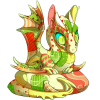I seem to have located a major worker of the species. I will attach some photos. In the sunlight it looked like the mesoma was blue-black while the head and gaster were black. However in my house it looks totally black with distinct brown mandibles. I believe it is a major worker because it interacted with the smaller ants but no interactions were hostile. Another observation I made was that from what I could see, it was the only larger ant on the path, but to be fair, there were few smaller ants, because these ants prefer to come out when it is early afternoon to night time. I found it at around 9.30am. I also attached an image of what the mesoma looked like to me, along with the node, to the left of the imageIMG_20211204_094404.jpg
IMG_20211204_094349.jpg
IMG_20211204_094329.jpg
IMG_20211204_094215.jpg
That ant is Rhytidoponera, the two are different species, this one has a very different gaster and head shape than the first one.
I originally found one that looked like Rhytidoponera from SA but because of the picture it looked more Camponotus to me at the time.
https://www.antweb.o...shot=d&number=1
Also if its 50meters away its another colony.
Yes, this seems like the species! It was very obviously punctated on the head and abdomen. Thank you! It's nice to have a positive identification for that one haha.
In terms of the image, considering that I collected the ant in my first post from around that nest it seems like it came from there and I misidentified the nest. However, I have been looking around at different blogs and I'm wondering if the colony could possibly be the black sugar ant or the pavement ant? Let me know what you think
I legit just logged back on to say that hahaha. First picture ant might be a black sugar ant or pavement ant. (most likely pavement.) Until better pictures, can't be sure. I'm also new to the ant keeping and have trouble adding an ID to ants I find.
that's why that site is like my best friend right now xD
I don't think they are pavement ants since they are Myrmicinae ants which have two petiole nodes, this ant only has one.
What do you think about them being black sugar ants then? Is there a way I could check to see?















